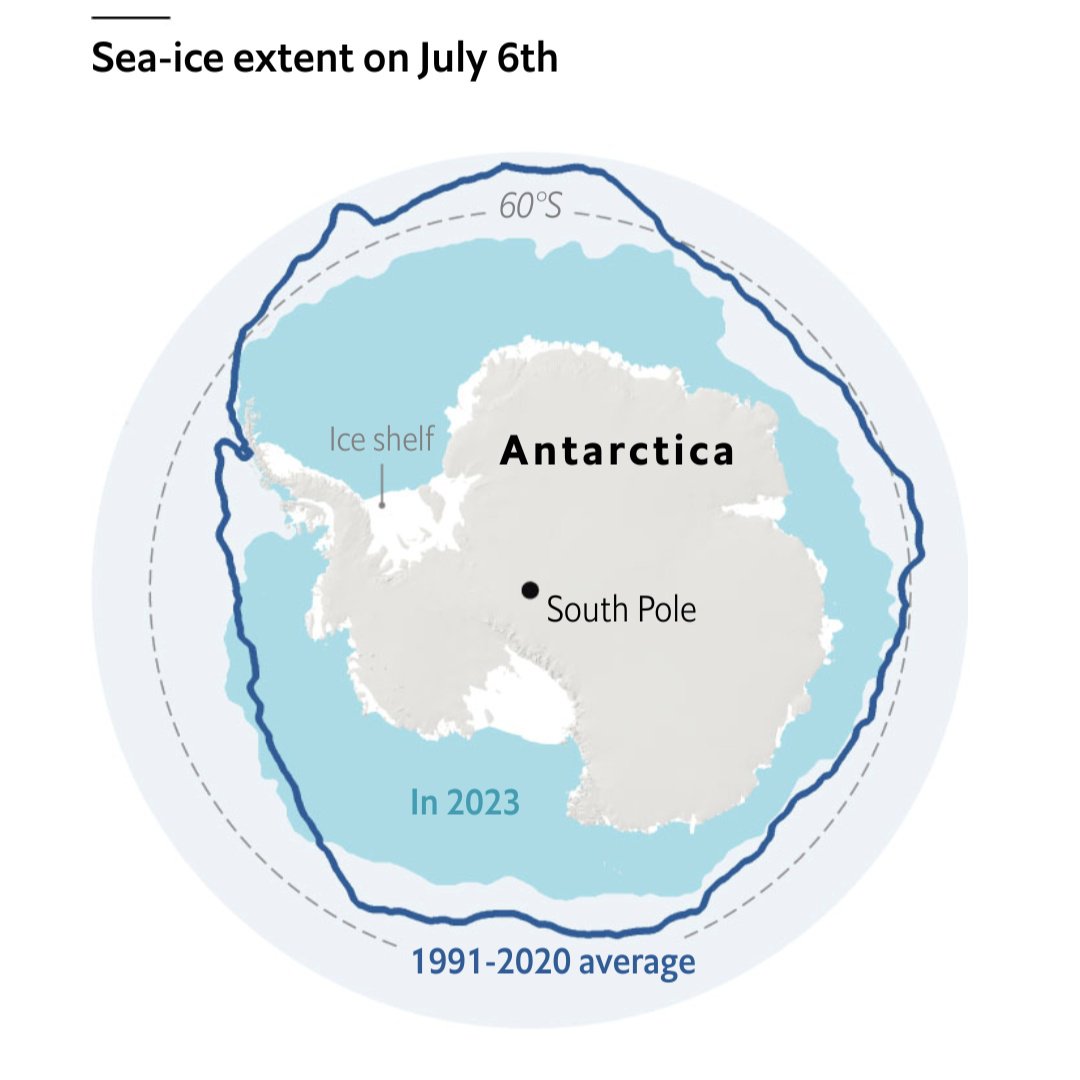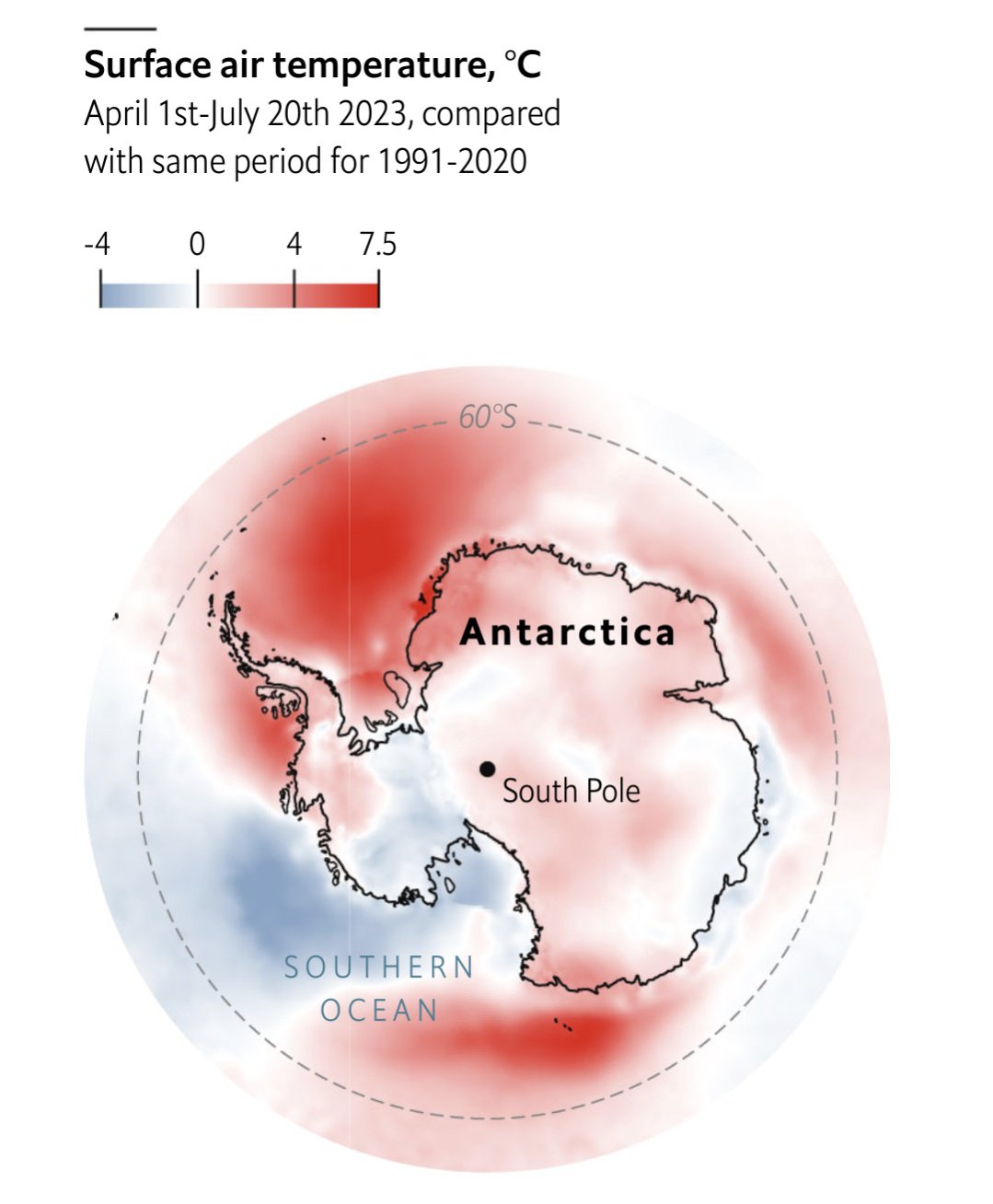Antarctic Sea Ice Extent, 1972-present
Antarctic Sea Ice Extent, 1972-present

That 2023 line does not look ideal...
Source: The Economist
Each point represents a five day moving average. The x-axis is in terms of historical standard deviations, i.e each day is compared to the standard deviation of historical values for that year. So we are at -6 SD from the historical average for this point in time.
Other excellent visualizations are in the article!



I don't want to sound pessimistic but this seems bad
20 0 ReplyDamn, I know we're in !dataisbeautiful@lemmy.world
But there's nothing beautiful with this data.
12 0 ReplyGood. When it's gone we'll be able to get to that sweet sweet oil
6 0 Reply[Slaps the newly exposed dirt] "It's free real estate!"
8 0 ReplyI mean.. that is literally what Russia, right-wingers, and neoliberals want..
Melt the ice, get the dino juice bc we only have 47 years of reserves left...
2 0 Reply
Holocene extinction any%
6 0 ReplyThis is fine!
5 0 ReplyTake that, stupid mean sea ice. That's what you get for sinking our boat. Apes together strong.
3 0 ReplyThis is probably one of the most insane things I've ever said but its like the Mario and Luigi of terrifying climate charts from 2023


2 0 ReplyI love graphs that don't have their axis labeled. I the first graph, y axis, what am I looking at? -2 what?
2 0 ReplyThey are standard deviations, which is described in the footnote. But yeah, probably better to label that axis.
2 0 Reply
To be fair we were in a heat wave, even by the new standards set by climate change.
1 13 Reply